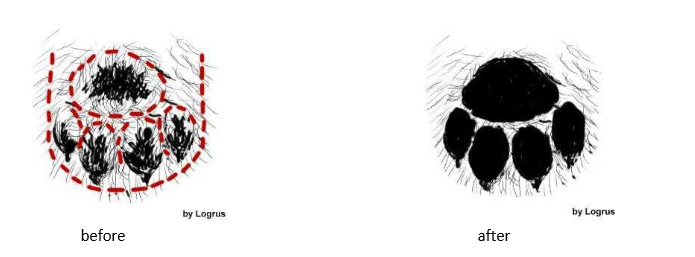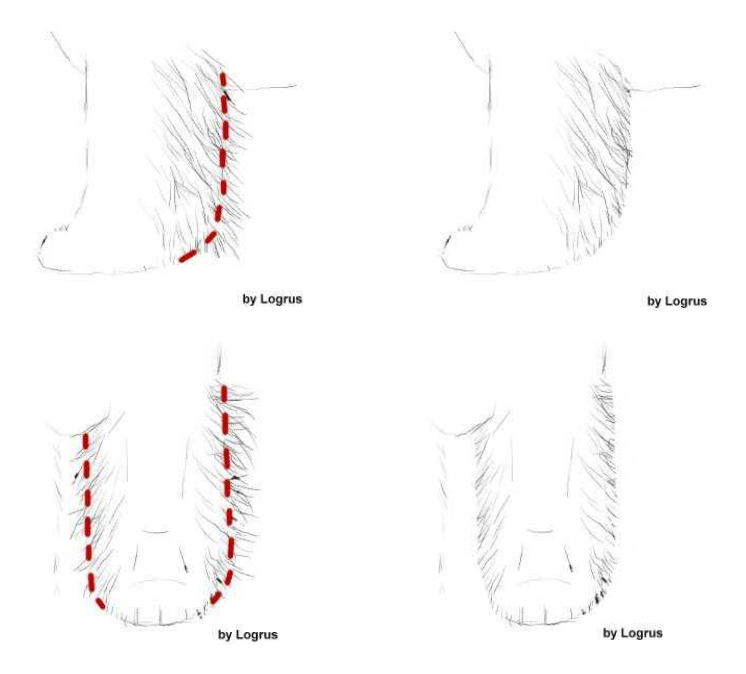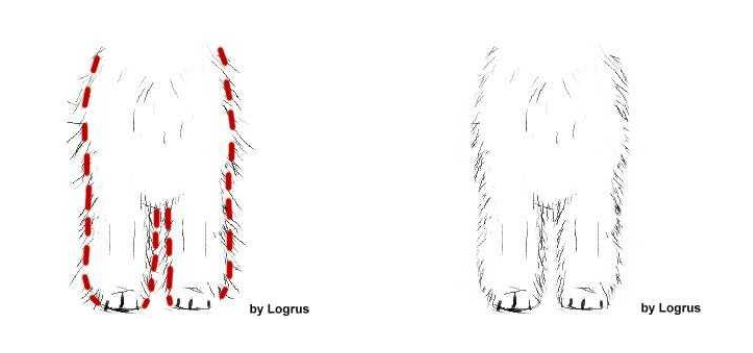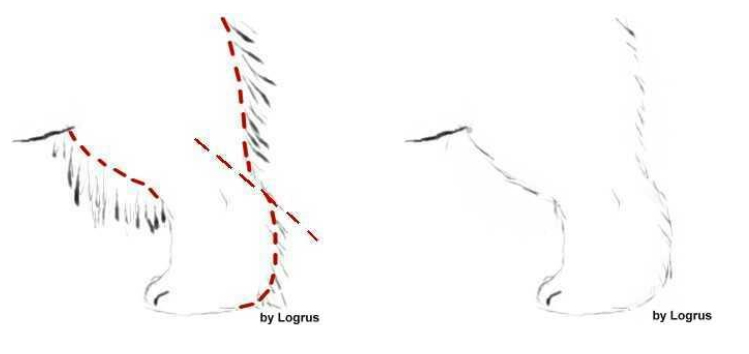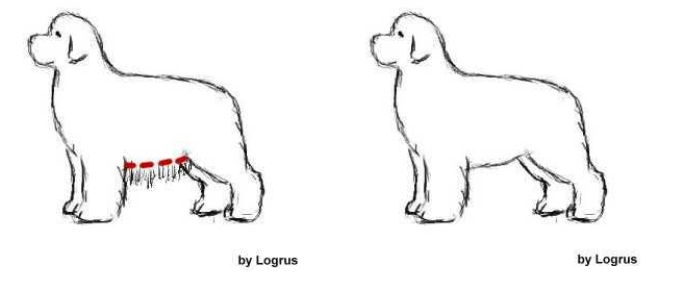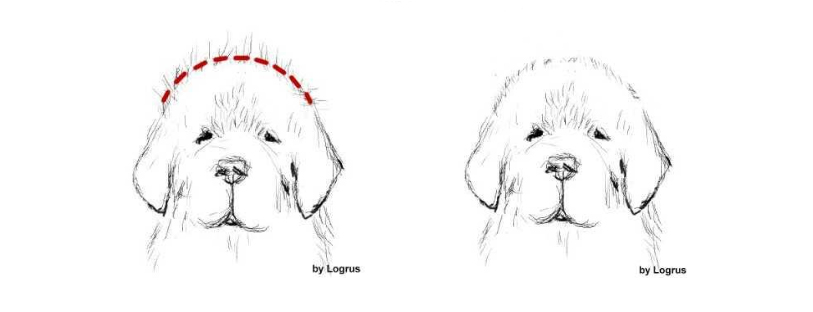This page is to share information about grooming your Newfoundland. After multiple owners shared various experiences regarding dropping off their Newf, at a professional groomers, only to pick up a shaved Newf hours later; I decided it was time for a grooming page. Please realize that just because someone works at a grooming shop, that in no way means they know how to groom every type of dog. You need to take a photo with you, have a description or something so you can be sure your Newf is not going to be shaved!
To see product and grooming tool examples go to my general tips page
 A very special Thank You to Iwonna Salak of Logrus for the information on grooming!
A very special Thank You to Iwonna Salak of Logrus for the information on grooming!
Before grooming dog MUST be bathed, thoroughly dried and combed.
Bathing:
Show dogs must be bathed a day before every show and in period between shows any 15-20 days black and bronze dogs and any 10-15 days black&white dogs. Frequently bathing take away oil from coat, so cosmetics we use must be of especially good quality. Prepare diluted in water shampoo and conditioner, dry towels. Put dog to the bath and wet him thoroughly with warm (!!!) water. After put diluted shampoo and massage it into the coat. Put it on the muzzle too, between eyes and under the ears. Be vigilant around these parts of body! Next rinse all shampoo thoroughly, rinse Twice to be sure!. If coat is very dirty you can repeat operation. After this apply conditioner, wait some minutes and rinse. If you show your dog day after rinse all conditioner, if not you can leave a bit on the coat.
Wait when most part of water goes away and dry dog with towels and put Newf on the grooming table.
Drying:
Use a blower-dryer to dry the coat of your Newfie. It's powerful and blows cold air. Start to blow out all water from the coat, be careful around eyes, nose and ears. Next start to dry (always downwards the coat). At first back (upper part of the neck, back and croup). If your dog has a bit of a waving coat you can brush and dry coat, but be careful and don't scratch the skin. Next lower part of the neck and left flank, after this; belly, right flank, forequarters, backquarters and tail. Coat between toes dry upwards. Lastly dry coat on the head (upwards coat on the cranium). When dog is completely dry you can start to brush and comb.
Brushing and combing:
Start with brushing of all coat and next comb it thoroughly. You don't want ANY matting. Start combing from down parts of the hindquarters lift the hair upwards with one hand, and comb the hair below your hand down to the skin proceed in direction of the tail. Next the second leg, between legs (carefully!) and tail from tip to tail set. Next back from croup to the neck and flanks from belly to back. Remember to comb accurately under armpit. Later forequarters, neck, under and behind ears and head. Now cut the nails and clean the ears.
Nails:
Use your nail cutter and clip the nails just short of the quick. Be careful! Next use your dremel tool to sand the nails down slightly so that they are smooth. Don't forget to trim the dewclaw.

